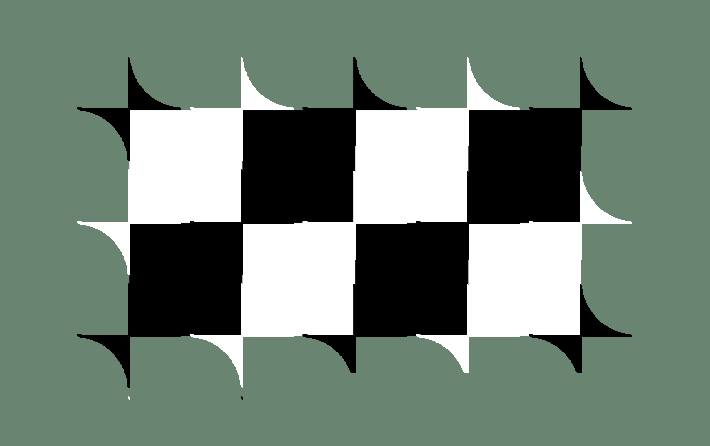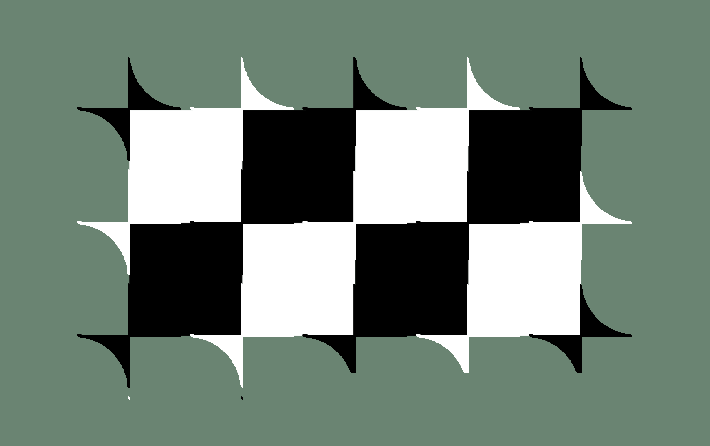Spine Drift Illusion Checkerboard Variant - Page-1
This illusion was first introduced By Kitaoka, A., 2010 [link]
How to draw the illusion - 1.0.A - 1.1.A:
Neutral background color (#7f7f7f):

Comment:
- The color (#7f7f7f) is produced by changing the brightness of black or white by ±50%.
- The contrast invert of #7f7f7f does not change the color. The color remains the same.
1.0.A - 1.1.A:

Comment:
- 1.1.A is the contrast inverted version of 1.0.A.
- A neutral background color (#7f7f7f) is used in both cases.
- Both patterns (1.0.A & 1.1.A) produce the same illusory motion direction.
Demo 1.0.A:

Comment:
- Commenting on the structure: the white spine forms a curved structure on the black checkerboard, making it slide easily.
- The background color is neutral gray (#7f7f7f), minimizing its impact.
Demo 1.1.A:

Comment:
- Commenting on the structure: the black spine forms a curved structure on the white checkerboard, making it slide easily.
- The background color is neutral gray (#7f7f7f), minimizing its impact.
How to draw the illusion - 1.2.A - 1.3.B:
Favorable background color:

1.2.A - 1.3.A:

Demo 1.2.A:


Demo 1.3.A:
Comment:
- Combining the lightest (white/#ffffff) with dark (grey/#5b5b5b), respective the darkest (black/#000000) with light (grey/#a4a4a4).
How to draw the illusion - 1.4.A (I):
Comment:
- 1.2.A and 1.3.A produce the same illusory motion direction as 1.0.A and 1.1.A.
Combining 1.2.A with 1.3.A

Demo 1.4.A:

How to draw the illusion - 1.5.A - 1.8.A:
Demo 1.5.A:



Demo 1.6.A:
Demo 1.7.A:




How to draw the illusion - 1.4.A (II - III):
Demo 1.4.A (III):

Comment:
- The size of the spine affects the intensity. By making it smaller: (A) the checkerboard shape changes, and (B) the intensity increases.


Comment:
- The grey checkerboard can be colored. In this image, the colors have the same luminance as 1.7.A.

Comment:
- The grey checkerboard can be colored. In this image, the colors have the same luminance as 1.7.A.
Demo 1.8.A:


How to draw the illusion - 1.9.A:

Comment:
- Similar to 1.4.A: The spine have replaced with cross.

Demo 1.9.A (I):

Demo 1.9.A (II):

How to draw the illusion - 2.0.A:




Demo 2.0.A (II):

Comment:
- Similar to 1.7.A: The spine have replaced with cross.

- Date: Sep 15, 2022 [Link].
- Date: Sep 15, 2022 [Link].
- Date: Sep 15, 2022 [Link].